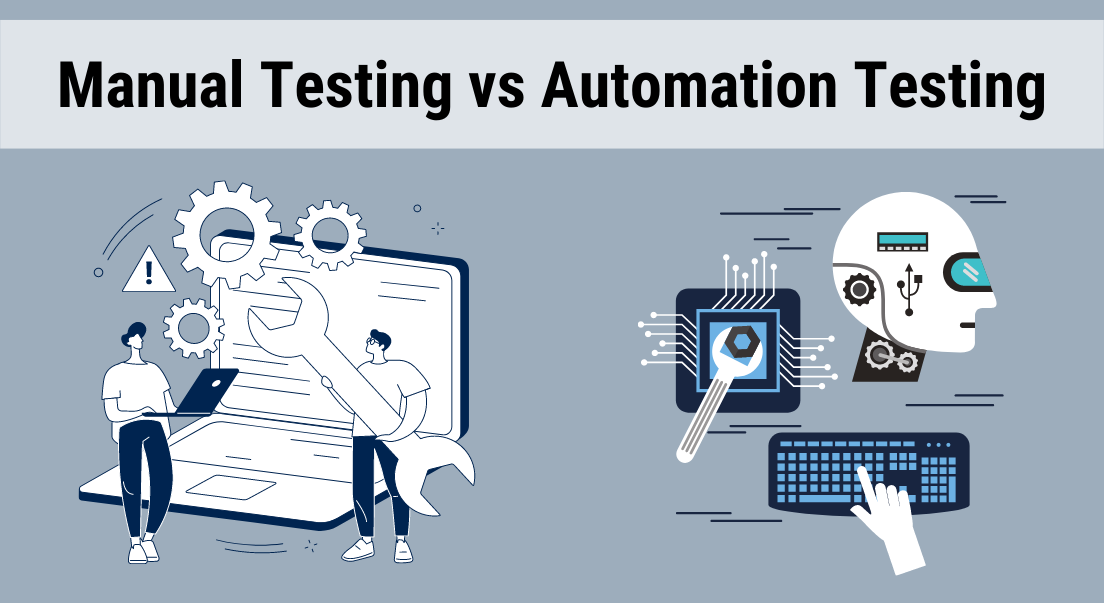Ensuring Success in Automation Evaluating: Trick Metrics, Obstacles, and Solutions Every QA Team Must Know
In the realm of software application quality assurance, the landscape of automation testing is ever-evolving, demanding a precise strategy to make sure seamless operations. Key metrics offer as the compass guiding QA groups via the vast surface of test automation, losing light on progression and areas for improvement. Obstacles loom big, usually casting darkness on the course to success. By comprehending these obstacles and carrying out efficient services, QA groups can navigate with intricacies with skill. The trip to understanding automation screening is paved with subtleties that require a keen eye for surveillance, analysis, and constant enhancement. automation testing. As the sector moves ahead, the quest for optimum performance in automation screening stays a consistent pursuit, advising QA teams to furnish themselves with the understanding and strategies essential for accomplishment.
Value of Trick Metrics
Comprehending the importance of key metrics is essential for reviewing the performance and effectiveness of automation screening processes. Trick metrics act as quantifiable measures that provide important understandings into different facets of the testing process, such as examination protection, examination implementation time, problem density, and examination instance effectiveness. By analyzing these metrics, QA teams can determine traffic jams, inefficiencies, and locations for renovation within their automation screening structure.
One essential element of crucial metrics is their capacity to track development and monitor the total health and wellness of the screening procedure (automation testing). They enable stakeholders to make enlightened decisions based upon data-driven insights, which can result in extra effective screening approaches and much better resource allocation. Furthermore, key metrics can aid groups established realistic goals, determine the success of automation efforts, and demonstrate the ROI of automation screening efforts

Common Challenges Dealt With
Difficulties frequently run into in automation screening processes can substantially influence the general efficiency and performance of QA groups. Automation screening might not cover all facets of screening, such as usability and customer experience testing, which still require hands-on intervention. Overcoming these obstacles needs proper planning, tactical examination case choice, durable maintenance processes, appropriate resources, and a clear understanding of the constraints of automation screening.
Reliable Solutions for Difficulties
To deal with the challenges encountered in automation testing, applying effective remedies is vital for boosting the effectiveness and efficiency of QA groups. One essential remedy is to invest in robust training programs for QA teams to ensure they have the needed skills to efficiently make use of automation tools. Training can link expertise gaps, enhance understanding of automation structures, and boost scripting abilities, eventually bring about more effective test creation and execution.
One more important solution is to develop clear interaction channels within the QA team and with various other stakeholders, such as programmers hop over to here and task managers. Effective interaction assists in straightening assumptions, sharing development updates, and quickly dealing with concerns or roadblocks that might arise during the automation testing process.

Tracking and Analysis Techniques
Executing efficient monitoring and analysis methods is critical for guaranteeing the success and efficiency of automation testing processes. By utilizing tracking tools, QA teams can track the efficiency of test scripts, identify bottlenecks, and identify areas for enhancement. Real-time tracking permits for fast discovery of concerns, allowing quick action and resolution. Furthermore, examining test outcomes and metrics gives beneficial insights into the high quality of the software application being evaluated and the performance of the screening strategy.
One trick technique in surveillance and evaluation is the use of control panels that settle appropriate metrics and KPIs in an aesthetically easily accessible format. These control panels use a thorough summary of examination implementation condition, examination coverage, defect patterns, and various other essential info. On a regular basis evaluating and assessing these control panels can assist QA groups make educated choices, prioritize jobs, and enhance screening initiatives.
Furthermore, executing automated signals and notifications based on predefined thresholds can enhance proactive monitoring reference and timely intervention. By setting up signals for efficiency discrepancies or examination failings, teams can deal with concerns promptly and avoid them from intensifying. On the whole, tracking and analysis methods play a crucial role in guaranteeing the effectiveness and success of automation testing efforts.
Constant Improvement Strategies
Enhancing the efficiency of automation screening processes necessitates the constant improvement of methodologies and techniques. Continual renovation techniques are essential for QA teams to adjust to developing modern technologies and provide high-grade software. One vital technique to boosting automation testing procedures is to perform routine reviews and retrospectives. By assessing previous testing cycles, teams can determine bottlenecks, inadequacies, and locations for enhancement. Executing responses loops and including lessons learned right into future testing frameworks can produce substantial enhancements with time.

Verdict
To conclude, Continue it is important for QA groups to recognize the key metrics, challenges, and options in automation testing to make certain success. By thoroughly monitoring and evaluating information, implementing reliable solutions to typical challenges, and constantly enhancing strategies, QA teams can optimize their testing processes and provide top quality software application products. Abiding by these practices will inevitably cause a lot more reliable and reliable automation testing practices.
By evaluating these metrics, QA teams can identify traffic jams, ineffectiveness, and locations for enhancement within their automation testing structure.
Additionally, vital metrics can assist teams set reasonable objectives, gauge the success of automation campaigns, and show the ROI of automation screening initiatives.
Challenges frequently come across in automation testing processes can substantially influence the total performance and performance of QA teams. Automation screening may not cover all facets of screening, such as functionality and user experience screening, which still need manual intervention.In final thought, it is important for QA groups to recognize the crucial metrics, difficulties, and options in automation testing to ensure success.